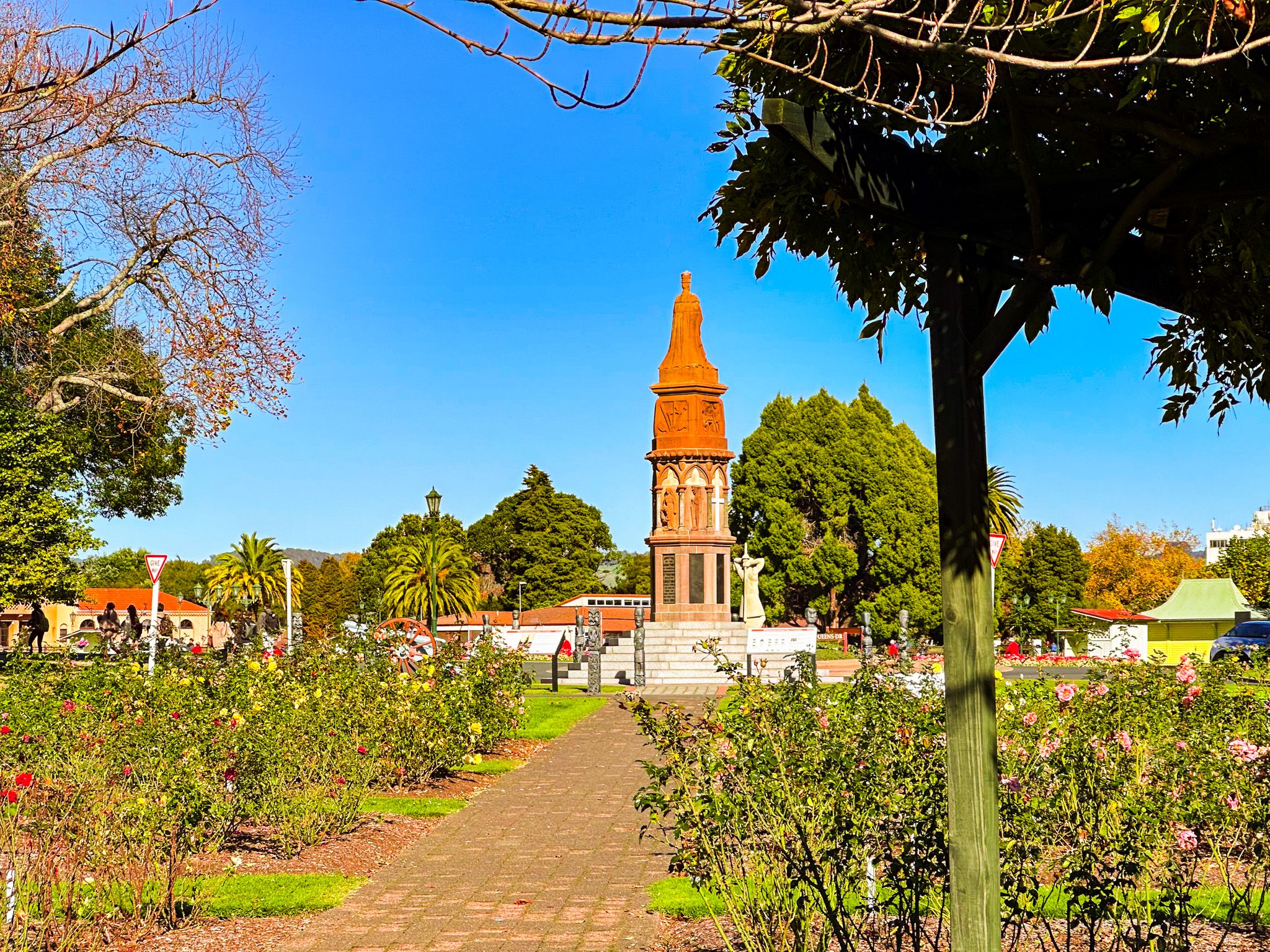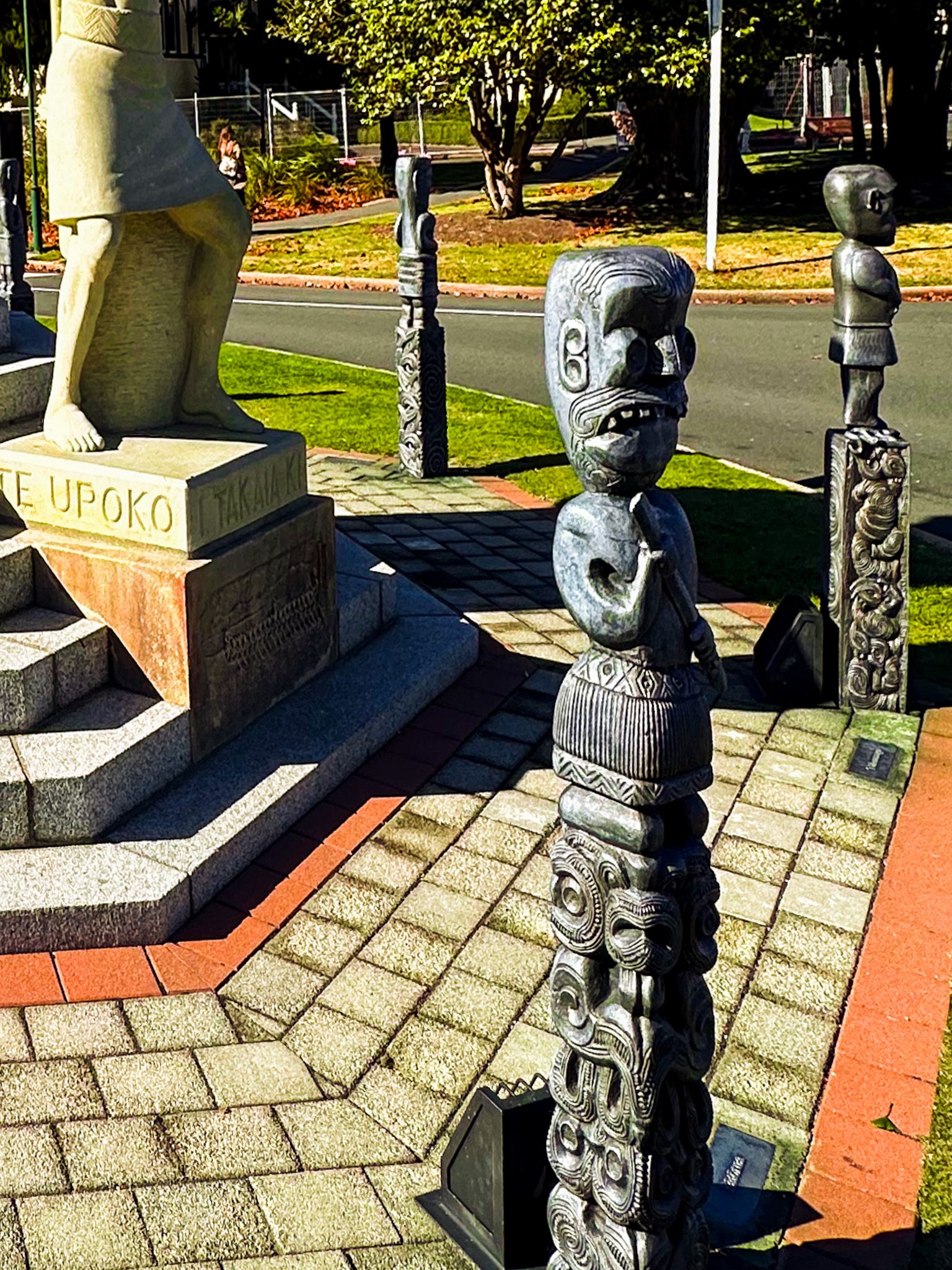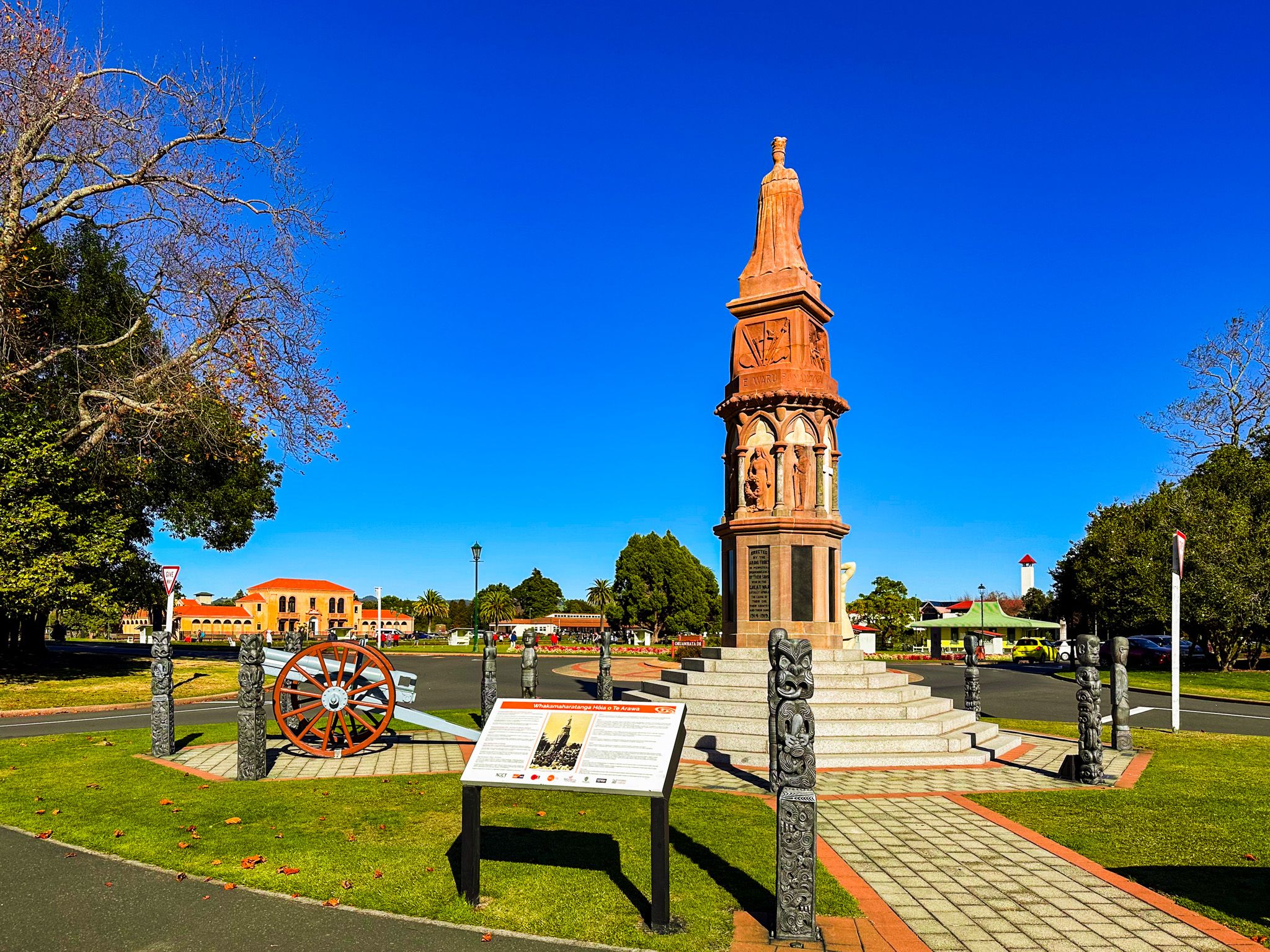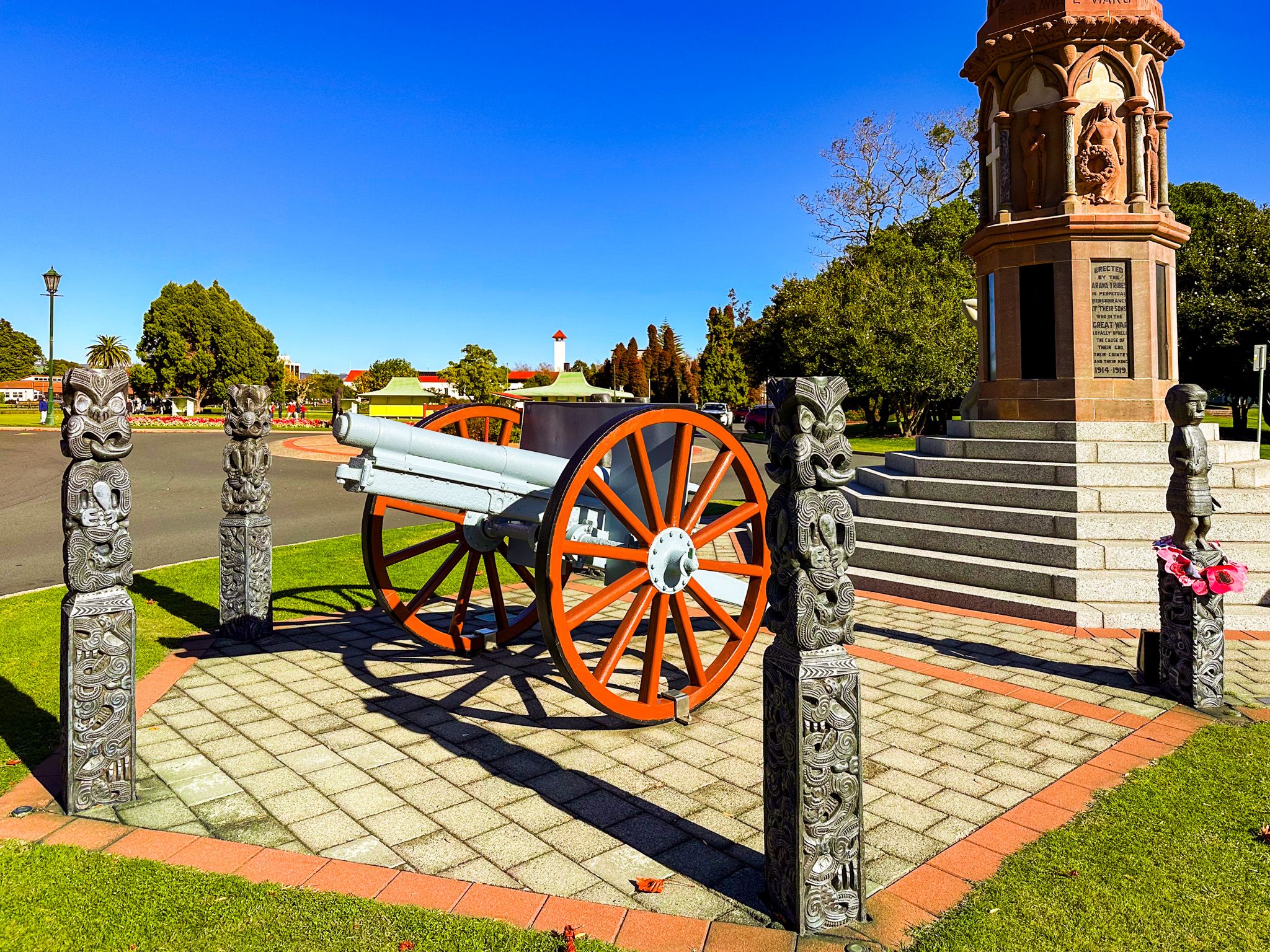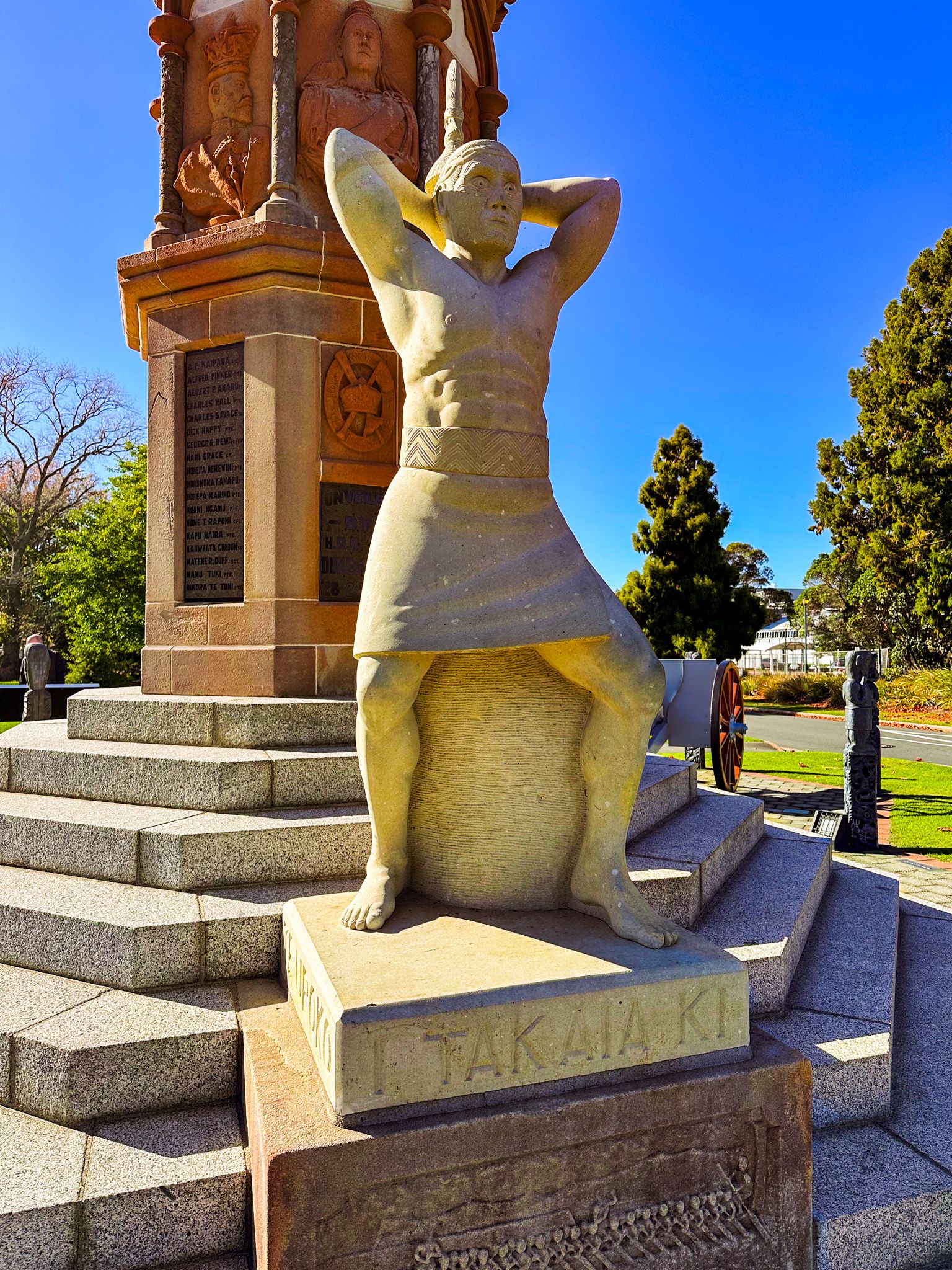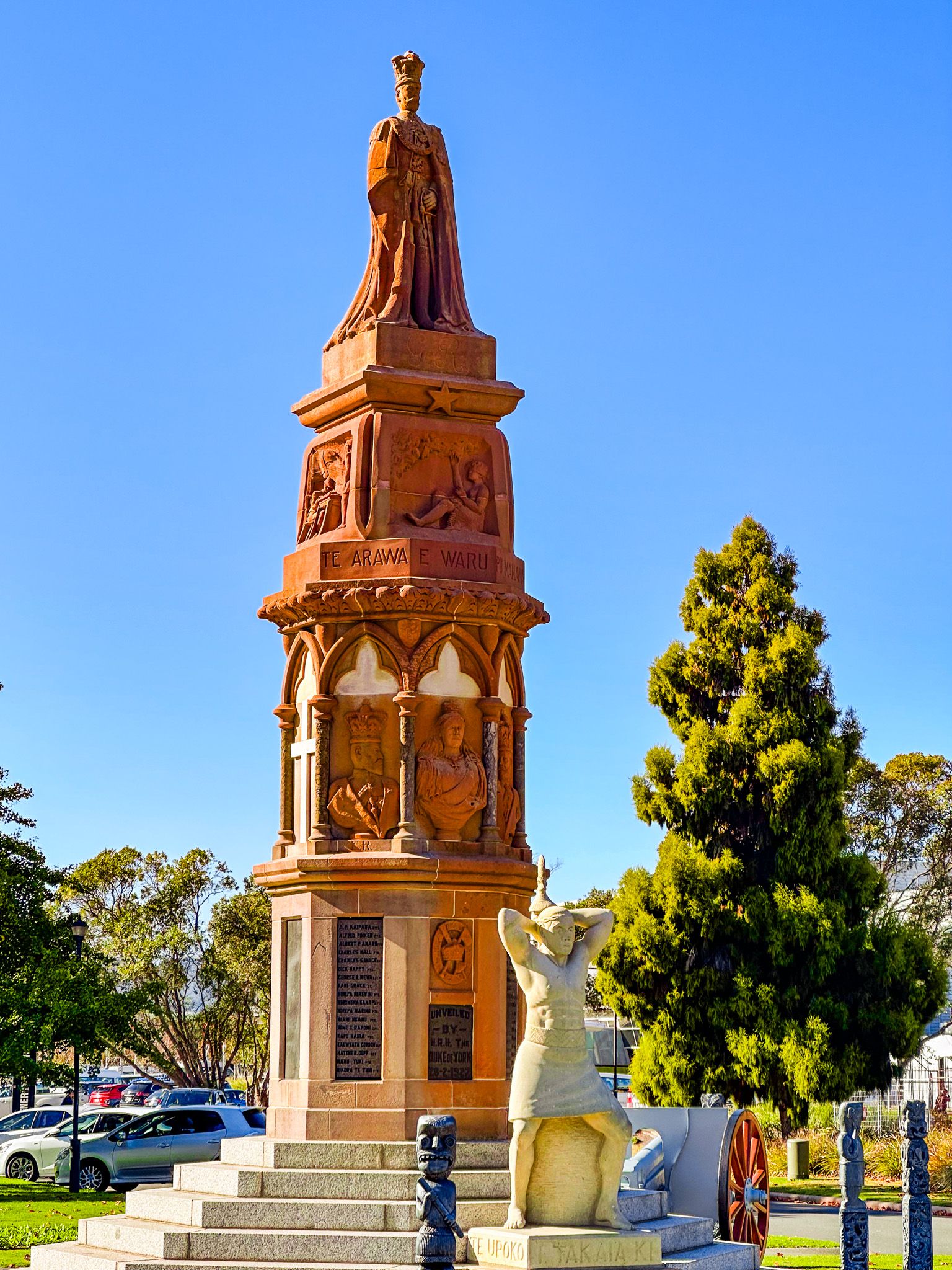The Arawa War Memorial is towards the east end of Government Gardens in Rotorua, on the corner of Queen Drive and Oruawhata Drive. It was built to commemorate the Te Arawa iwi men who fought and died for NZ in WWI. Every town in NZ that existed in WWI has its war memorials, but the Arawa memorial is unique in its complexity.
In addition to recording the names of those who died, it features the Duke of York (later King George VI), who personally unveiled the memorial on 28 February 1927. At the front of the memorial is a statue of Rangitihi, taiaha (a striking weapon), ready behind his head. He was a famed chief and the great-great-grandson of Tamatekapua, who was captain of the Arawa waka, which brought the Arawa people of the Bay of Plenty and Rotorua regions to Aotearoa. The pou arranged around the memorial are for his children – Rātōrua, Tāuruao, Rangiaohia, Rangiwhakaekeau, Rākeiao, Kawatapuarangi, Apumoana and Tūhourangi. They are the Ngā Pūmanawa e Waru o Te Arawa – the Eight Beating Hearts of Te Arawa and all Arawa are descendants.
There are also several graphic panels. These show the story of Te Kuraimonoa awaiting her celestial lover Pūhaorangi, important as a precursor union to Te Arawa; the signing of the Treaty of Waitangi; preaching by Thomas Chapman, the first Christian missionary to Te Arawa; and traditional weapons of war. On the west side of the memorial is a German gun from WWI. Te Arawa combatants captured this, which attests to their commitment and bravery.
William Feldon designed the memorial in a Gothic style and a more typical war memorial for Matakana. It was made from Sydney sandstone and Belgian marble. Tai Mitchell and Gilbert Mair were the key figures in building the memorial. These extraordinary men encouraged the iwi to raise funds and record some of their stories for posterity.
